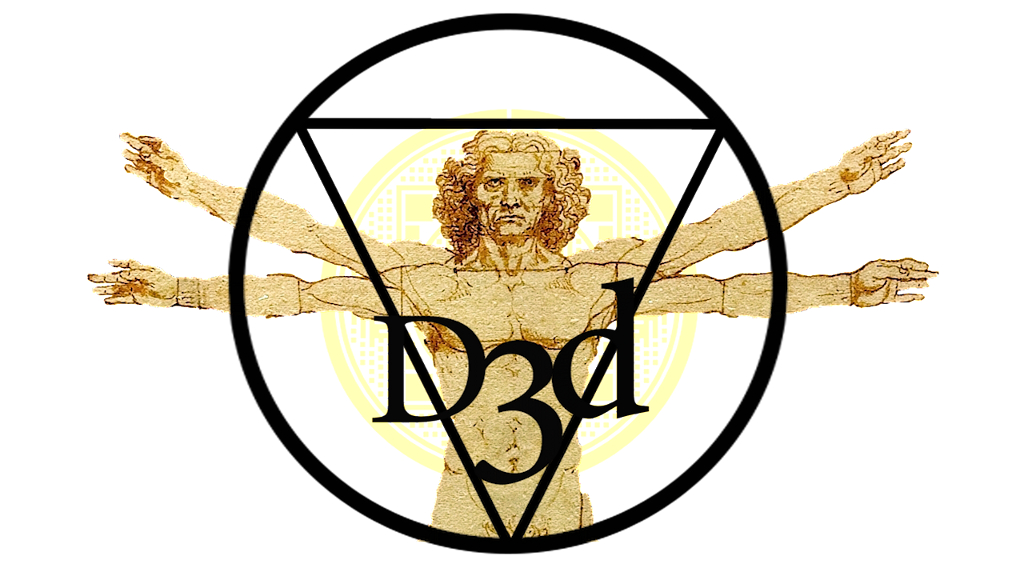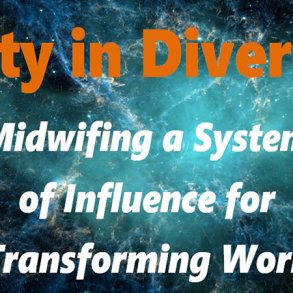By Marco Antonio Robledo for Enlivening Edge Magazine
This is a special summary/condensation of Prof. Robledo’s paper which won the award for the Best Academic Paper, at Integral European Conference, 2016.
3D Management: An Integral Theory for Teal Organizations [1]
In Woody Allen’s “The Purple Rose of Cairo,” Tom Baxter is a movie character who suddenly walks off the screen and into the real world. Liberated from his flat black-and-white environs, he discovers a much more complex and richly-coloured three-dimensional reality.
Much in the same way, some innovative theories and organizations are showing us that another kind of business is possible. There is a way out of the constraining monological flatland of conventional business, and the way is upwards.
The “center of developmental gravity” of management theory and practice is Orange, but the time has come to move up the spiral of development. Most of the new visions of business and organizations come from the Green stage of development, but some theories come from the Second Tier of consciousness such as the re-inventing organizations theory or my own 3D-Management theory.
My theory “3D Management” appeared for the first time in 2004 in a book I published in Spanish (D3D: Un Enfoque Integral de la Dirección de Empresas), so it is the pioneer theory of integral business. It is also the most integral of all business theories. In comparison, its Teal counterpart, Laloux’s Reinventing Organizations, is Integrally-inspired and Integrally-informed, but not Integrally built.
My theory is also Integrally built, since it was developed using a metatheory-building process that combined AQAL with meta-triangulation [2], and it is based on the Big-3 dimensions of human existence[3].. 3D Management is a meta-theory that integrates all previous organizational knowledge in an integral, balanced, and non-marginalizing framework [4]
It is also worth mentioning that in my purpose of helping organizations in their evolutionary purpose to higher stages of consciousness, I have founded in Mallorca the “3-D Management Club of Conscious Organizations,” a benchmarking club that aims to be a space for reflection and co-creation to help facilitate the transition to a new model of Second-tier consciousness based in Integral theory and 3D management.
FROM 1D TO 3D
A truly integral theory should consider in an inclusive and non-marginalizing way all the different elements that structure organizational reality. If we apply the quadrants of development of Ken Wilber’s AQAL theory, managing an organization in an integral manner should take into account the feelings, emotions, needs, desires and motivations of people¾the interior of the individuals, their physical well being and conduct¾the exterior of the individuals, the beliefs, values and symbols of the organization¾the cultural dimension, and all the technical, social, and economic aspects¾the social dimension.
INTERIOR |
EXTERIOR |
|
INDIVIDUAL |
Subjective dimension | Objective dimension |
COLLECTIVE |
Intersubjective dimension |
Interobjective dimension |
Figure 1: Quadrants of development and dimensions of human existence (Wilber).
Obviously, organizations being a collective enterprise, the lower quadrants are the most important ones, but if we compare left and right, the right-side quadrants are the ones that have received more attention both by management theory and practice. Therefore, there is a specific worldview which dominates management: scientific materialism. As a result, the typical management researcher or practitioner will favour the idea that what is fundamentally real is that which is revealed by the methods of science.
As both of the right-hand quadrants are characterized by objectivity, they can be put together in one single dimension, so the four quadrants are also referred to as the three value spheres of subjectivity, inter-subjectivity, and objectivity. The quadrants, therefore, correspond with the empirical-intellectual, the aesthetic-emotional and the moral aspects of reality that are referred to by Wilber as the “Big Three”.
My theory is called 3D Management, i.e. three-dimensional management, alluding to those three fundamental and irreducible dimensions. When applied to business and organizations, I have chosen to refer to them as science, arts and ethics:
- Science: Science is a techno-economic dimension that analyzes organizations from a scientific viewpoint using mainly objective and quantitative measures. Its ultimate goal is to maximize the economic value of the organization through quality, productivity and profitability. To this end, the science of management has developed an arsenal of theories, systems, models, techniques and technologies.
- Art: The aesthetic and emotional dimension of business is based on values such as creativity, imagination, intuition, design, fun, and passion. It is fueled by inspiration and creativity, as a result of our evolutionary drive, our innate need to get out of the comfort zone and create novelty.
- Ethics: It is the moral dimension of management. Its aim is to guide the organization by ethical principles and values such as honesty, social responsibility, and respect for the environment. Its ultimate goal is to contribute to the common good. Ethics is a sort of meta-dimension, since it marks the limits of what is right and what is wrong, what should or should not be done.
The three dimensions represent equally important realities that work as an organic whole. Science is necessary to know what, art to know how, and ethics to know why. Excessive focus in one of those dimensions unbalances the triangle.
Unfortunately, if we were to represent the management dimensions of most of the organizations according to their importance, it would look like an isosceles triangle, as they tend to be dominated by a scientific view. Thus, the Big Three are reduced to the Big One, a mono-dimensional flatland of monological, empirical, analytic, positivistic “it’s” resulting in technocratic organizations where technical and economic needs prevail over human ones and where the only reality is the objective one.
The result: purely materialistic companies focusing on increasing profits at the expense of people, the planet, and everything else involved, without heart or soul, full of logic but meaningless, overflowing with information but lacking wisdom.
3D Management advocates a change of regime in which the absolutist imperialism of science is replaced by a harmonic triumvirate that takes into account the perspectives of each dimension without any of them dominating the others. With 3D Management the bleak mono-dimensional reality of conventional business is turned into a vibrant, colorful three-dimensionality.
It is important to understand that each dimension is governed by its own rules. Explaining with the eye of science aspects of other areas is called in philosophy a “category mistake”. Trying to justify business ethics from an economic perspective is just an example of that mistake. The only justification in ethics is that something is the “right thing to do”. For too long, organizations have been reduced to a mono-dimensional reality where only the economic and material matter. My model places every dimension in its right place.
That is not to say that those dimensions are not interrelated. Following in the previous example, if the unethical behavior of an organization is made public, this can result in customers refusing to buy its products or services, radically affecting its financial performance.
To avoid any kind of imbalances in the management triad, we cannot contemplate the dimensions as isolated components, but as a whole.
In order to do that, we need a fourth dimension that integrates the Big Three in an essential unit. The fourth management dimension is the spiritual dimension, that aspect of our nature that strives after unity and meaning.
Organizations can be conceived in a spiritual way as a community of individuals deeply in sync and in communion with their environment, working together to achieve a higher purpose.
The 3D-Management theory promotes the emergence of a corporate spirit, a spiritual unity of all members who feel they are a part of the organization in mind, body, and soul. In this way, the individual does not feel alienated or disconnected from the objectives of the organization, but feels like a part of it, committed to what it does and represents. Those kinds of organizations are perceived by their members as more appealing and satisfying, since the members are able to bring more of themselves to work without the risk of having to renounce their principles, and because the members find the organization a fertile soil to grow in, and to achieve their highest potentials.
That is why I believe it imperative that the language of spirit becomes a part of organizational jargon: words like community, soul, contribution, transcendence, authenticity, and vocation should be as much a part of the management vocabulary as the usual ones.
THE TENETS OF 3D-MANAGEMENT
Higher Purpose:
Profits are as important to a company as water, food and air are to humans, but just as we don’t live to breathe, a healthy and balanced business shouldn’t live for making money. For Teal organizations, profitability can be considered a limiting factor on business activity. 3D Management organizations subscribe to a purpose which is different from and goes beyond making money.
Purpose in 3D-Management organizations is of a spiritual nature; it transcends and includes the objectives of all the other dimensions. This higher purpose is articulated in the objectives of the other dimensions. Their particular mission is to contribute to the higher purpose. The scientific dimension does so through the maximization of economic value, the artistic dimension through the growth and development of the organization and its members, and the ethical dimension through the contribution of the organization to the common good.
Culture and core values:
3D Management organizations consider their corporate culture to be one of their greatest assets. They have strong cultures based on the tenets described here, and pay special attention to their values. While each can have very different values from the others, they share some core values such as trust, accountability, transparency, integrity, egalitariarism, post-conventionalism, respect, solidarity, social responsibility, fairness, loyalty, creativity, personal growth, and love and care.
Integral Leadership:
The essence of leadership from a 3D-Management perspective is to achieve the intended objectives efficiently (scientific mission), motivate and develop people (artistic mission), pursue the common good (ethical mission). They also build strong communities by transcending their own self-interest for the good of the group, and convey powerful and meaningful visions to their followers (spiritual mission).
Total stakeholder orientation:
Conventional organizations have a hierarchy of stakeholders: shareholders come first, customers come second, then employees (in the best of the situations), and so on. On the contrary, 3D Management organizations consider all of their stakeholders as equally important, interconnected and interdependent. These organizations aspire to optimize value-creation to all of them, so the objectives of each stakeholder can be met simultaneously. The purpose of business is still “creating value”, but from an integral perspective.
Thus, value is multi-dimensionally redefined so that it contributes to the welfare and happiness of all stakeholders. Happiness through products or services that make customers happy, through profits that make shareholders happy, through work that make employees happy, and through contribution to the common good that make society happy.
Orange organizations basically care about shareholders and customers; Green organizations introduced social responsibility and employee integration, but Second-tier organizations need to integrate all of them together with all the rest of the stakeholders in a balanced and non-marginalizing way.
Let me finish with a call for attention: In my opinion, the Teal organizations movement is too focused in internal aspects. We have to bring the concern for society and the planet to the forefront, as 3D Management theory does. That concern is one of the main reasons that brought us here to this moment and to the whole movement of Teal organizations. We are doing all this because we are not satisfied with the conventional model of business, both from an internal point of view (organization and human resources management) and from an external point of view (social responsibility and relationship with the stakeholders.)

Marco Antonio Robledo (PhD, MBA) is a full professor of management and director of the MBA program at the University of the Balearics Islands (Spain). He defines himself as a change agent who helps organizations and individuals in their integral development and transformation.
He published a book in Spanish about 3D Management, his pioneer integral theory of management, and contributed several papers about integral business in a number of conferences and journals. He is the founder and leader of the 3D Management Club of Conscious Organizations. E-mail: [email protected]
[1] This is a condensed version of the article that received the award of best academic paper at the Integral European Conference 2016.
[2] Meta-triangulation is a qualitative research process developed by Gioia and Pitre for building theories recognizing and using various paradigms. Meta-triangulation identifies the underlying paradigms of different theories and develops new theories or paradigms to explain the phenomenon of study. Its process includes three phases (ground work, data analysis, and theory building)
[3] The Big Three is a concept employed by Ken Wilber to refer to the three major value spheres of subjectivity, intersubjectivity, and objectivity (see figure 1). These three domains of reality are discernable in all major languages through pronouns that represent first-, second-, and third-person perspectives (I, We, and It/s).
[4] You can see how this integration was done, together with the whole process of metatheory building in: Robledo, M.A. (2014). Building an integral metatheory of management. European Management Journal, 32(4), 535-546.




